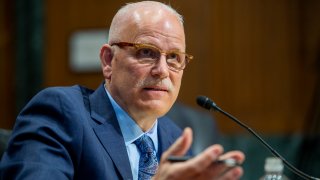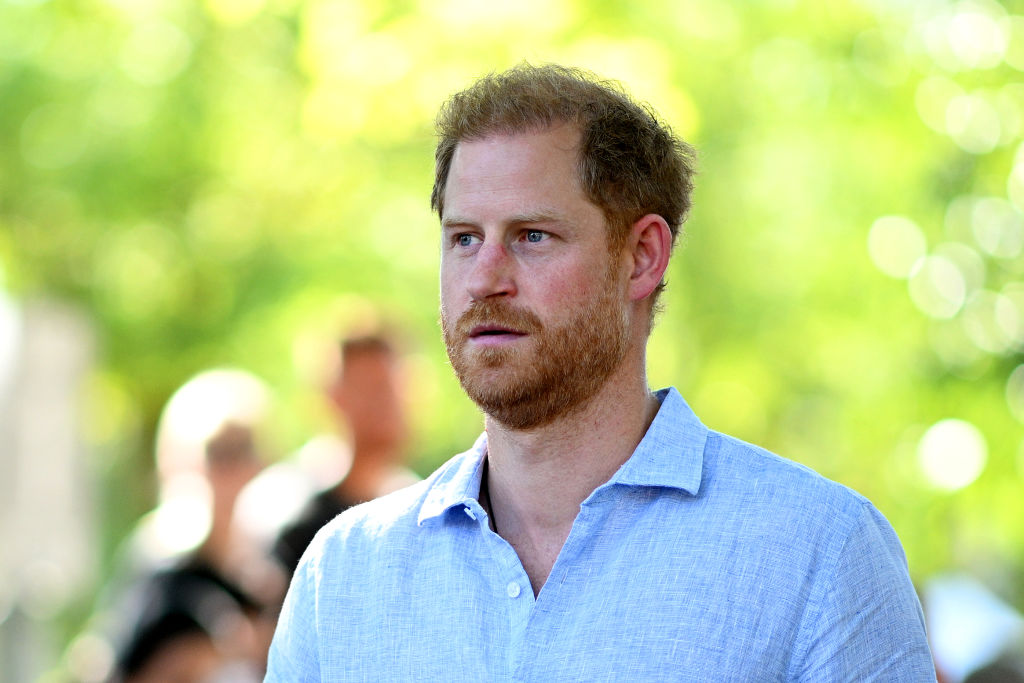
One agent protested that he didn't join the Border Patrol to look after children in custody. Another asked why a policy to make asylum-seekers wait in Mexico for court hearings wasn't being used more. And one turned his back on the senior officials who had come to listen.
Unsurprisingly for anyone who's been tracking migration along the United States' southern border, the recent showdown happened in Yuma, Arizona, where encounters with migrants illegally crossing into the country from Mexico jumped more than 20-fold in December from a year earlier.
Discontent among the ranks is only one of the challenges Chris Magnus faces as the new leader of the United States' largest law enforcement agency. Magnus, who was sworn in this month as commissioner of the Border Patrol's parent agency, Customs and Border Protection, also faces persistent allegations that his agency is mistreating migrants, failing to recruit more women and is at the mercy of a broken asylum system.
Magnus might seem like an unconventional pick. When he was the police chief in Tucson, Arizona, he rejected federal grants to collaborate on border security with the agency he now leads and kept a distance from Border Patrol leaders in a region where thousands of agents are assigned.
Feeling out of the loop? We'll catch you up on the Chicago news you need to know. Sign up for the weekly Chicago Catch-Up newsletter here.
In his first interviewas commissioner, Magnus acknowledged morale problems and outlined some initial steps meant to fix them. He had no simple answer to address migration flows.
"There have always been periods of migrant surges into this country for different reasons, at different times," he said last week. "But I don’t think anybody disputes that the numbers are high right now and that we have to work as many different strategies as possible to deal with those high numbers.”
Magnus noted the growing number of migrants who from countries outside of Mexico and Central America, a trend that has been especially strong in Yuma.
U.S. & World
Under a public health order known as Title 42 that was designed to limit spread of COVID-19, Mexico takes back migrants from the U.S. who are from Mexico, Guatemala, Honduras or El Salvador and are denied a chance to seek asylum. Other nationalities are eligible for expulsion, but the U.S. often won’t fly them home due to the expense or strained diplomatic relations with their home countries. Instead, they are often quickly released in the U.S. to pursue asylum.
“There’s a lot of frustration," said Rafael Rivera, president of the National Border Patrol Council Local 2595, a union that represents agents in the patrol's Yuma sector, which has seen a huge increase in such migrants. “They feel like there’s no consequences, that we have an open border.”
The number of migrant encounters on the U.S.-Mexico border totaled nearly 154,000 in January, a 15% decline from December, following three months of increases, according to court records in a suit filed by the state of Texas challenging Biden administration immigration policy. Just over half of the people encountered were quickly expelled under the public health order.
In December, U.S. officials stopped Venezuelans at the border nearly 25,000 times,which was more than double September’s count and more than a hundred times the roughly 200 they made in December 2020. Venezuelans trailed only Mexicans in the number stopped at the U.S. border in December.
In the Yuma sector, which stretches from California’s Imperial Sand Dunes to western Arizona’s desert and rocky mountain ranges, Venezuelans were stopped nearly 10 times more than Mexicans in December. Colombians, Indians, Cubans and Haitians also outnumbered Mexicans.
Mexico began requiring visas for Venezuelans on Jan. 21, Homeland Security Secretary Alejandro Mayorkas noted during his contentious Jan. 26 meeting with Yuma agents, according to a recording leaked to the website Townhall, which publishes conservative viewpoints. He said the U.S. was pressing Mexico to accept more nationalities under Title 42 authority and to increase immigration enforcement within its own borders.
Magnus, who reports to Mayorkas, told the AP that migration flows are “increasingly complex” and that the U.S. was "doing our best to build and take advantage of relationships with these different countries that migrants are coming from.”
Although President Joe Biden faces many of the same challenges as his predecessors, Donald Trump visited the border often, spent massively on enforcement and got an early endorsement from the agents' union in 2016.
As a Biden appointee and an outsider who had a chilly relationship with Border Patrol leaders in Tucson, Magnus might struggle winning over agents.
Roy Villareal, chief of the Border Patrol’s Tucson sector from early 2019 until late 2020, said he sought an introductory meeting with Magnus, who was then Tucson's police chief, but that he never heard back, calling their lack of interaction “a telling sign." Villareal could recall speaking to Magnus only three times during their overlapping tenures — each one a courtesy call from Magnus to inform him that Tucson police were about to arrest one of his agents.
“He’s the wrong person for the Border Patrol,” said Villareal, who retired after 32 years in the agency. “His knowledge and understanding of border enforcement just isn’t there. ... Agents will challenge him.”
Others consider Magnus a good fit.
“He is very respected among his colleagues,” said Gil Kerlikowske, a former Seattle police chief whose focus on use of force rankled some agents when he held Magnus’ job from 2014 to 2017. “Chris’ background on holding people accountable is pretty extensive.”
Magnus, 61, was born and raised in Lansing, Michigan, where he served stints as an emergency dispatcher, paramedic, sheriff’s deputy and police captain. He was police chief in Fargo, North Dakota, and Richmond, California, before he took the job in Tucson in January 2016. In that latest role, he took orders from elected leaders in the liberal city of more than 500,000 people.
In Tucson, Magnus created a program to steer people away from drugs, worked with nonprofits helping homeless people and overhauled the department's use-of-force policy. He openly criticized Trump policies for making migrants more reluctant to share information about crimes with police.
CBP critics in Tucson give Magnus mixed reviews. Vicki Gaubeca, of the Southern Border Communities Coalition, said he championed “some very progressive policies,” but that the Border Patrol needs a visionary who will change what she calls a deep-seated “culture of impunity.”
In his final weeks as police chief, Magnus called for the firing of an off-duty officer who shot and killed a suspected shoplifter in a motorized wheelchair, saying it was "a clear violation of department policy.” The officer left the department last month.
And in 2020, Magnus offered to resign over an in-custody death that the department failed to make public for two months, but the city manager asked him to stay.
One longstanding issue Magnus faces is allegations of agents using excessive force. Agents have been involved in an increasing number of use-of-force incidents and there have been more fatalities involving Border Patrol agents, though the number of encounters surged at an even higher rate.
Magnus said the use of force is a “very serious concern" and that he believes the overwhelming majority of agents act responsibly. He also defended specialized teams that collect evidence in incidents that might involve agents' excessive use of force. Democratic congressional leadershave expressed serious concerns about the Critical Incident Teams, which some activists allege are shadowy cover-up operations.
“This is really not unusual in most police agencies,” Magnus told the AP. “There’s absolutely no reason why trained investigators in the field can’t be gathering this kind of critical evidence."
___
Fox reported from Washington and Snow reported from Phoenix.



